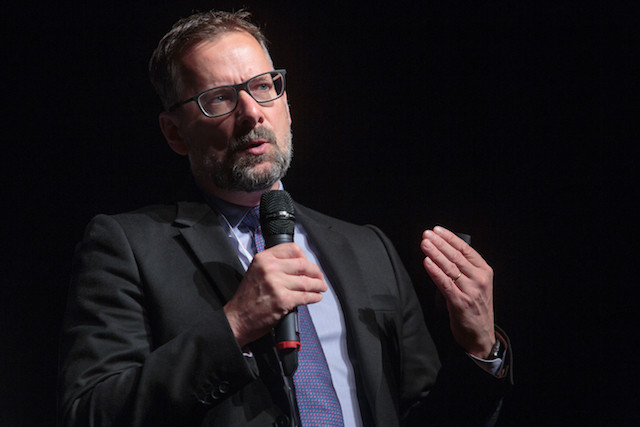Speaking at the SnT partnership day on Tuesday, Steve Collar said the development would “fundamentally change the economics of” the business, since current satellites typically provide service for just 15 years.
“We spend a huge amount of money to get satellites into orbit and they have a limited lifetime,” he said, explaining that new technology would enable the firm to refuel in orbit for the first time in 2021.
The chief was speaking a day after the launch of SES-12, something Collar said he never tired of seeing. He even likened the experience of launching a satellite which he had helped develop to that of having a child. “You’ve hopes and dreams and expectations for what that satellite, that small piece of you, is in orbit,” he said.
Satellite veteran
The Briton who, succeeded Karim Michel Sabbagh as CEO in April 2018, is considered something of a satellite veteran, having worked with Matra Marconi Space (now Airbus), Astrium, New Skies Satellites and SES World Skies before guiding medium-earth orbit satellite operator O3b Networks through the build and launch of its constellation of satellites.
Global connectivity for people in the hardest to reach places around the world remains for him the most important things satellites can do. Indeed, connecting the then 3 billion people without internet access was the goal of O3b (the number has since risen close to 4 billion). “Today we support significant telecoms in some of the hardest places in the world to reach and meaningfully change the lives of the people we connect,” he said, adding: “If you don’t have access to telecoms or internet, you cannot improve your life, develop a business, access education or health.”
Connecting refugee camps
And on Tuesday he briefly mentioned a project between SES and Google to connect refugee camps. With the UNHCR recording the highest levels of displacement on record with 65.6 million people around the world, the project could not come at a better time. “If we could provide them with a cheap mobile device with access to the internet, you change completely the possibility that individual has,” Collar said.
But, the firm’s focus is expanding and one of the biggest opportunities Collar sees in future is the intelligent gathering, sorting and presentation of data for its customers. He reminded attendees that more information was created in the last three years than in the whole of the rest of human civilization. “The opportunity is clear. How we capture it is less clear,” he said.
SES is one of Luxembourg’s greatest trailblazer stories, having begun as a government-backed startup in the 1980s. Luxembourg economy minister Etienne Schneider often likes to recall how at the time everyone thought Luxembourg was mad to invest in satellites, a decision which has paid off. In 2017, it separated its two core activities by creating SES Video and SES Networks as focused business units. The firm recorded a €596.1 m net profit in 2017 and said after its 2018 Q1 results were published that growth was expected in its SES Networks section.
